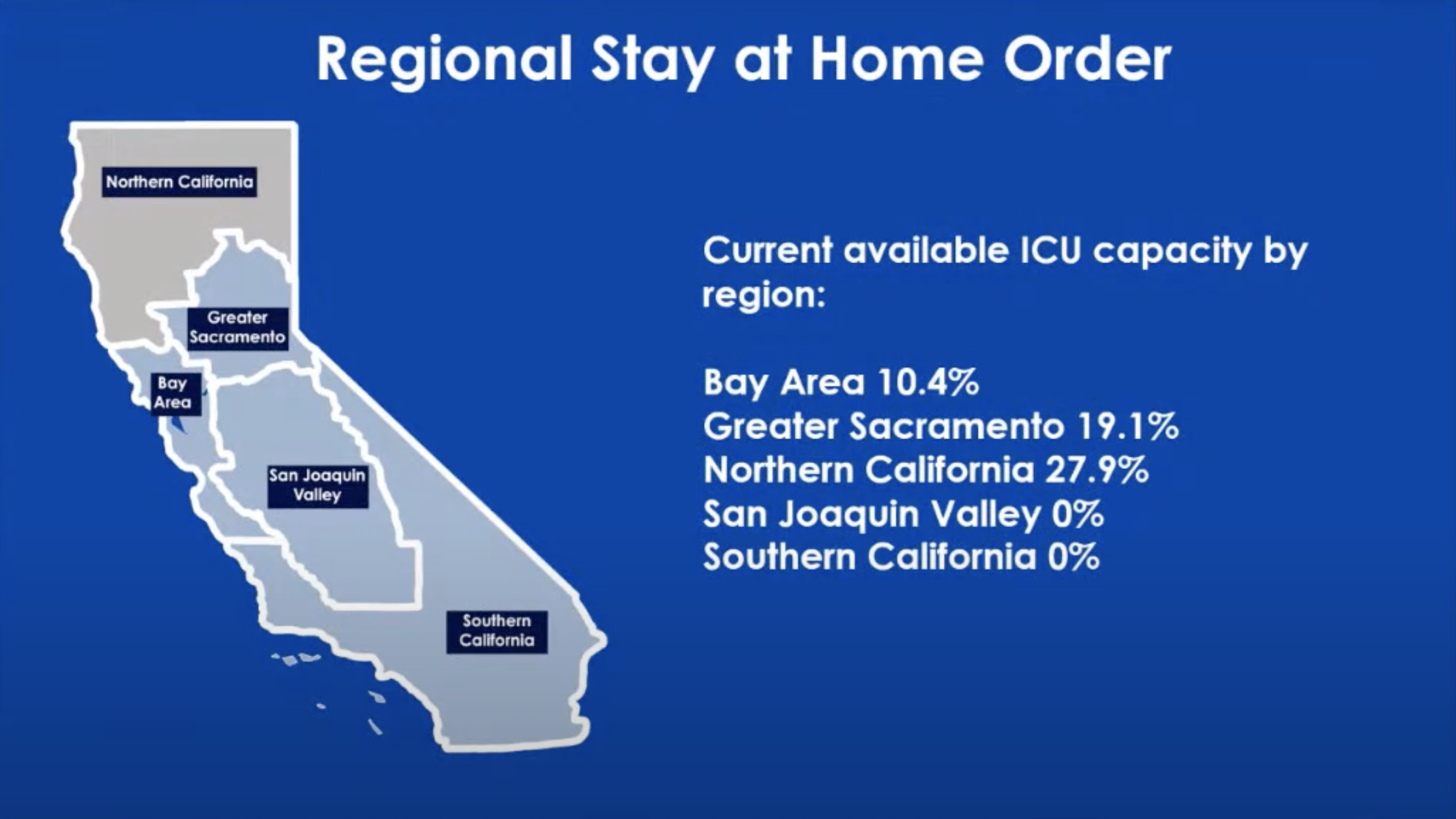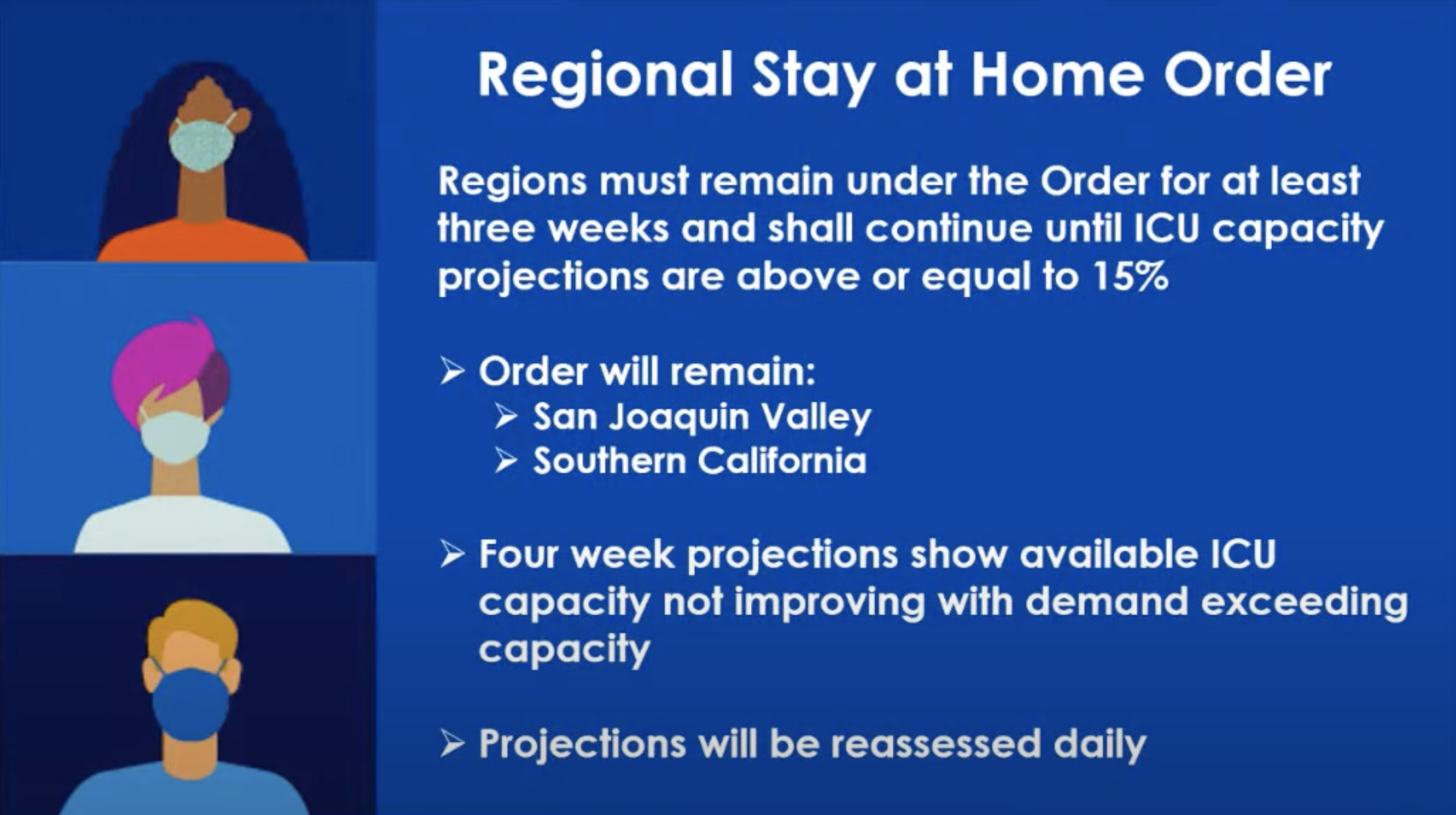
THE Southern California and San Joaquin Valley regions will continue to operate under the state’s stay-at-home order into the new year as their ICU capacities are projected to remain under the threshold based on the regional plan implemented by the state.
This development was announced in a virtual press conference by California Health & Human Services Agency Secretary Dr. Mark Ghaly on Tuesday, December 29, 2020.
The Southern California region includes San Diego, Los Angeles, Orange, Riverside, San Luis Obispo, Santa Barbara, Ventura, Imperial, Inyo, San Bernardino and Mono counties. Upwards of 23 million people live in the region, which accounts for more than 58% of California’s total population. The region has a current case rate of 130.1 per 100,000 individuals, with a 1.1 transmission rate.
Based on current numbers provided by the state on Tuesday, intensive care unit (ICU) availability for each of the regions are as follows: Southern California, 0%; San Joaquin Valley, 0%; Bay Area, 10.4%; Greater Sacramento, 19.1%; and Northern California 27.9%.
Projections done by the state’s team do not foresee both regions surpassing the threshold under the regional plan, which is set at 15% ICU capacity, according to Dr. Ghaly. Among the factors taken into account when making the state’s projections are current ICU capacity, current seven-day average case rate, current transmission rate (Reff) and current rate of ICU admission.
Dr. Ghaly also mentioned that regions included within the stay-at-home order will not necessarily stay there for an additional duration of three or four weeks as the projections are assessed daily by the state’s team of experts.

As COVID-19 cases surge in the state, Dr. Ghaly revealed that California will continue to monitor the situation closely and has issued guidance to hospitals dealing with the influx of cases. Those guidelines are geared to make sure that hospitals are able to remain in conventional or contingent care for as long as possible; that hospitals in a region work together, along with their County partners, to support each other to remain in contingent care for as long as possible; that hospitals have prepared plans for crisis care which is rooted in equity, fairness and transparency, as a last resort; and that the public will have clear and transparent information about crisis care continuum and the hospitals’ approach to crisis care during the surge.
While Dr. Ghaly commended California hospitals for their handling of the surge of COVID cases by adapting their operations, he also acknowledged that many hospitals and staff are being stretched to provide the level of care expected for all Californians. That is why it is important that each facility has a crisis care plan, wherein medical professionals will have to make hard choices on allocation of resources, that can deal with such situations when the time comes.
If a hospital or facility in any region enters crisis care, Dr. Ghaly said the state will do its best to ensure that it is in that level of care for the briefest period possible. In the interim, the state will do its best to prevent hospitals from entering crisis care. It will be the hospital, not the state, who will determine whether it enters crisis care based on the need for hospitalization and available resources.
“Together we can stop this surge,” Dr. Ghaly said as he ended his presentation. “Much of what we’re dealing with is avoidable. Much of what we’re seeing can be stopped if we collectively make decisions to stop it. And those decisions are to wear our mask, to stay at home as much as we can at this critical time, and when we do go out to make sure that we keep physically distanced, we don’t mix with anybody outside of our household for the time being, and that we do as much as we can to keep our mask on.”
Dr. Ghaly acknowledged that while some Californians have begun to experience fatigue from the constant messaging from state officials on protocols.
“We are in this moment where it can really make a difference, that each of us has the power and the tool to save a life, get the transmission rate down, and help somebody…and we want to continue to be about supporting and saving lives as much as we can as we go through this winter surge,” he said.
He also advised people to celebrate New Year’s virtually and make the decision to protect themselves and their fellow Californians to help stop the surge.
Meanwhile, California Gov. Gavin Newsom on Monday, December 28 announced that California has opted into the federal COVID-19 Pharmacy Partnership, at no cost to the state or local government.
Under the partnership, CVS and Walgreens will administer the Pfizer vaccine to residents and staff in long-term care facilities starting Monday. Both pharmacies will start vaccinations in nursing homes, which will take an estimated three to four weeks, and then move to vaccinate staff and residents in assisted living, residential care and other long-term care facilities.
Approximately 499 nursing homes will be provided the vaccine by CVS, and 357 by Walgreens, according to the announcement. The program will see CVS and Walgreens pharmacy staff (pharmacists, pharmacy technicians and nurses) administer the vaccine by going directly to the care facilities. Pharmacy technicians are participating under a recent waiver by the Board of Pharmacy that requires appropriate supervision under California law and specialized training.
“Vaccinating those most vulnerable among us is critical to fighting this virus,” said Newsom. “By leveraging CVS and Walgreens resources, we can effectively deploy vaccines to residents and staff at our long-term care facilities, which are at higher risk of COVID transmission – and do it at no cost to the state or local government.”






